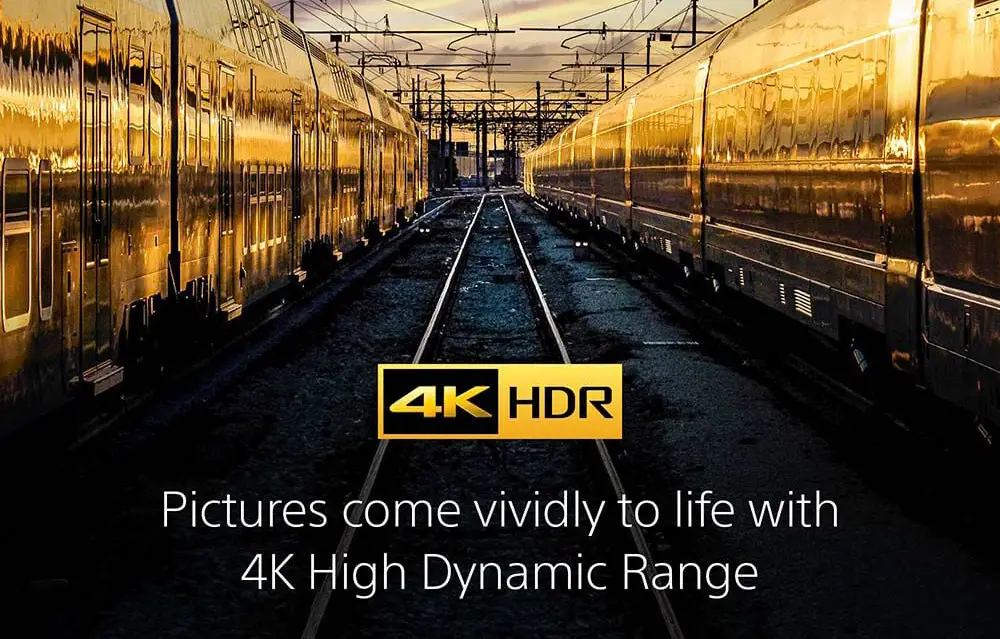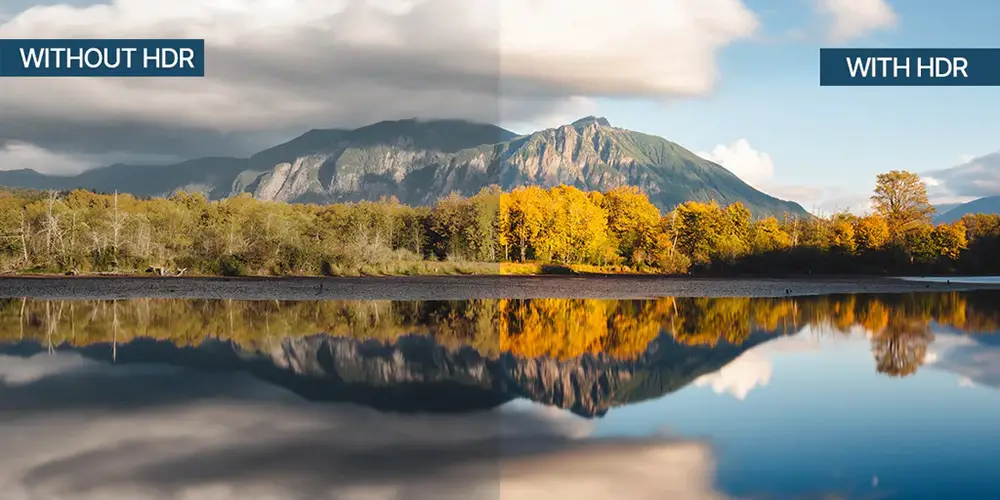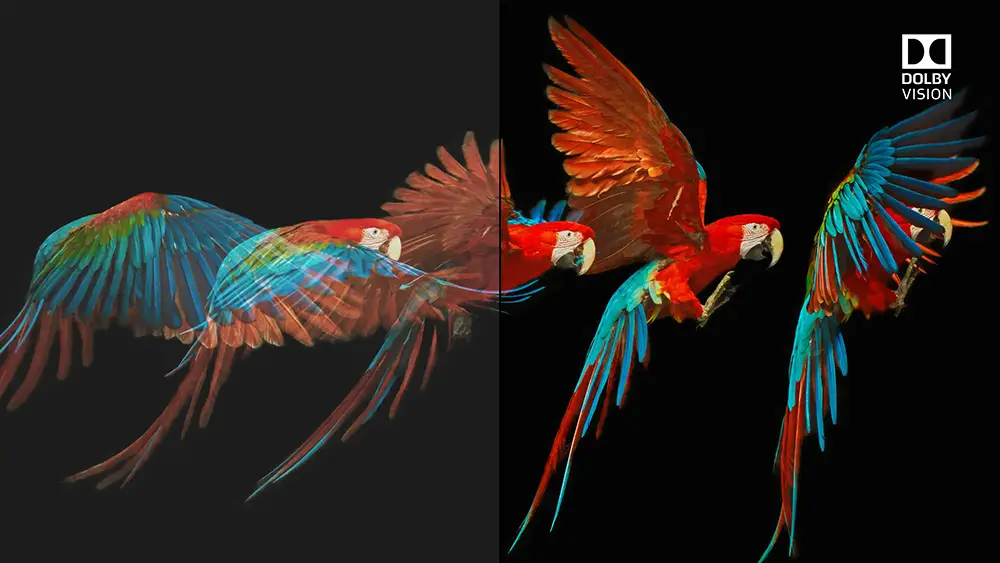*We are a reader-supported website. When you buy through links on our site, we may earn a small affiliate commission at no extra cost to you. Home Media Entertainment does not accept money for reviews.*
Introduction
High Dynamic Range (HDR) is a term that’s been making waves in the world of home theater and entertainment. But what is HDR, and why is it so significant? In this first part of our “HDR Explained” series, we will delve into the fundamental concepts of HDR. And we will provide you with a clear understanding of this transformative technology and why it matters.

Section 1: What is HDR?
High Dynamic Range (HDR) is a technology that has completely changed the way we experience visual content. It’s all about enhancing contrast and brightness in images and videos to deliver a more lifelike and captivating viewing experience. Unlike the conventional Standard Dynamic Range (SDR), HDR brings out the full spectrum of colors and details, creating a visual feast for your eyes.
HDR accomplishes this by expanding the range between the darkest blacks and the brightest whites in an image. It’s like upgrading your visual experience from a basic black-and-white television to a stunning full-color 4K display. But what are the core components that make HDR work its magic?
To understand HDR better, let’s start with the basics:
Basic Concepts of Luminance and Color Depth
Luminance refers to the brightness or light intensity of an image. In the world of HDR, this means being able to distinguish even the subtlest variations in brightness. Whether it’s the shimmering highlights of a sunset or the intricate details in the shadows of a thrilling movie scene.
Color depth, on the other hand, is about the richness and vibrancy of colors. HDR enables a broader palette of colors. Thus ensuring that every shade appears as vivid and true to life as the creator intended.
But why does HDR matter? And how does it enhance your viewing experience compared to the traditional SDR? In the following sections, we will explore the necessity of HDR. The benefits it brings to content consumption, its evolution over the years, and much more.
Section 2: The Need for HDR
High Dynamic Range (HDR) isn’t just a technological buzzword. It’s a response to the limitations of Standard Dynamic Range (SDR). But to appreciate the need for HDR, we must first understand why the transition was essential.
Limitations of SDR and Why HDR is Necessary
Standard Dynamic Range (SDR) has long been the standard for visual content. But it has its shortcomings. For example, SDR’s limited range of brightness and color depth pales in comparison to what HDR can offer. Because in the SDR world, the brightest whites and the darkest blacks are closer together. As a result you get less contrast and a narrower spectrum of colors. This leads to images that may seem flat and lack the visual punch that modern audiences crave.
Imagine watching a sunset on an SDR screen. The brilliant hues of the sky and the subtle gradations from light to dark might not be faithfully represented. On the other hand, with HDR, the same scene comes to life. With the golden glow of the sun and the deep shadows of the landscape rendered in unparallel detail.
Real-World Examples of Where HDR Makes a Difference
To put it in perspective, consider scenes with challenging lighting conditions. Whether it’s a candlelit dinner, a moonlit night, or a dazzling fireworks display. SDR often struggles to capture the full essence of these moments. HDR, on the other hand, excels in revealing every nuance. From the gentle flicker of a candle to the vivid burst of colors in a fireworks show.
But HDR doesn’t just enhance brightness. It also heightens the contrast between the darkest and brightest elements in an image. Making every visual experience more immersive and lifelike. Dark scenes in movies and vibrant sunsets in nature documentaries are excellent examples of where HDR technology shines. As it makes every frame a work of art.
The Role of HDR in Delivering More Lifelike and Immersive Content
HDR is not merely a technological advancement. It’s a tool for storytellers and content creators to bring their visions to life. It allows them to convey the full spectrum of emotions. From the subtlest nuances to the most dramatic moments. As a result, with HDR, filmmakers and directors can deliver a cinematic experience that pulls you into the story, making you feel like a part of the action.
Next we will delve deeper into the benefits of HDR in different content types. We will look how it evolved over the years, and how it continues to reshape the way we consume entertainment.

Section 3: Benefits of HDR in Content Consumption
High Dynamic Range (HDR) is a game-changer for the way we consume various types of content. In this section, we’ll explore the benefits of HDR for different forms of entertainment. From movies and TV shows to sports and gaming.
Improved Image Quality, Detail, and Color Accuracy
When you watch a movie or a TV show in HDR, you’ll notice a significant leap in image quality. HDR brings out the finer details that were previously hidden in the shadows and highlights. Due to this you see everything the creators intended. Every blade of grass in a nature documentary, the intricate patterns on a character’s clothing, or the subtleties of an actor’s expressions all become vivid and lifelike.
Color accuracy is another highlight of HDR. Due to a broader color palette and increased vibrancy, you’ll experience content as it was meant to be seen. For example, the deep blues of an ocean, the fiery reds of a sunset, and the lush greens of a forest. They all come to life in a way that was unimaginable in the SDR era.
Enhanced Storytelling and Visual Impact in Filmmaking
For filmmakers and content creators, HDR is a powerful tool. Because it allows them to craft stories with a level of detail and emotional impact that was previously unattainable. Lighting and color play pivotal roles in storytelling, and HDR gives filmmakers the ability to use these elements to their fullest potential.
Scenes in movies or TV shows that involve dramatic lighting, such as a sunset kiss or a suspenseful night chase, become more immersive with HDR. It intensifies the visual storytelling, drawing viewers deeper into the narrative.
Imagine watching a pivotal battle scene in a movie. With HDR, the fiery explosions, dazzling armor, and the shadows cast by intense combat become integral to the storytelling. It’s an experience that transcends the screen, making you feel like a part of the action.
HDR Across Different Content Types
HDR isn’t limited to just movies and TV shows. It enhances the viewing experience in various entertainment categories:
- Sports: When you watch a sports event in HDR, you’ll witness every drop of sweat, every blade of grass, and every bead of water splashing in crystal clarity. The dynamic range of HDR captures the fast-paced action with unparalleled precision.
- Gaming: Gamers benefit from HDR by experiencing games with richer graphics, vibrant landscapes, and lifelike character models. Whether it’s a post-apocalyptic wasteland or a colorful fantasy world, HDR brings games to life in a way that SDR cannot.

Section 4: The Evolution of HDR
High Dynamic Range (HDR) is a technology that has come a long way, and its evolution over the years has been nothing short of remarkable. In this section, we’ll take a brief journey through the history of HDR technology, from its early implementations to the challenges faced in its adoption.
Historical Context: The Development of HDR Technology Over the Years
HDR technology traces its roots back several decades. It has been an ongoing quest to replicate the stunning dynamic range and vivid colors found in the real world. Early experiments and research laid the foundation for what would eventually become the HDR we know today.
The transition from black-and-white to color television was a significant milestone in this journey. It introduced the concept of expanding the color gamut, though it was a far cry from the capabilities of modern HDR.
Early Implementations and Challenges in Adopting HDR
The road to widespread adoption of HDR was paved with challenges. Because creating displays and content that could take full advantage of the technology proved to be a complex task. Because of that early HDR implementations often required specialized equipment, making them inaccessible to the average consumer.
One of the key challenges was standardization. At the beginning multiple competing HDR formats emerged, leading to confusion among consumers and content creators. It wasn’t until the industry began to consolidate around a few key HDR standards that the technology started to gain momentum.
Despite these challenges, HDR persisted. And that is due to its undeniable potential to transform the way we experience visual content.

Conclusion
In this first part of our “HDR Explained” series, we’ve embarked on a journey through the captivating world of High Dynamic Range (HDR). We’ve uncovered the technology’s fundamental concepts, explored its necessity in the face of Standard Dynamic Range (SDR) limitations, and delved into the myriad benefits it brings to content consumption.
We’ve seen how HDR enhances image quality, detail, and color accuracy, making every scene a visual masterpiece. It has breathed new life into filmmaking, enabling directors to tell stories with a level of depth and immersion that was previously unattainable. From the sports arena to the gaming world, HDR has left its mark, offering more vibrant and lifelike experiences across different content types.
Our journey also took us through the historical context of HDR technology, with early implementations and the challenges faced along the way. Despite the obstacles, HDR persevered and continued to evolve, eventually becoming a transformative force in the entertainment industry.
What’s Next
In the upcoming articles of this series, we’ll delve deeper into specific HDR formats and features. We’ll provide you with in-depth insights into the various technologies that make HDR possible and guide you in choosing the right HDR setup for your home theater.
So, whether you’re a cinephile looking to enhance your movie nights, a sports enthusiast craving a more immersive experience, or a gamer seeking richer graphics, HDR has something remarkable in store for you.
Thank you for joining us on this journey to understand “What is HDR.” We invite you to explore the subsequent articles in the series to discover more about the exciting world of High Dynamic Range technology.

Closing Remarks
Stay Informed
To stay updated on the latest developments in the world of home theaters, be sure to subscribe to our newsletter towards the beginning of this article and follow our blog. We’re committed to keeping you informed about the latest trends, product releases, and technology updates to enhance your entertainment experience.
Join the Conversation
We value your thoughts and questions. If you have any queries or topics you’d like us to cover in future articles, please don’t hesitate to reach out. Your feedback and engagement are essential in shaping the content we provide.
For more educational articles you can check our dedicated Educational Articles section.
Although there are many articles published already about HDR I always like to read yours. I know a lot about what HDR is but I am curious if there is something I have missed. I will definitely wait for the rest of the series as well as whatever else you have in store for the future. Keep up the good work!
Hello Jenni. Thank you for your comment. Let us know if there is anything else you would like to read from us. All ideas are welcome!
I have read a few of your reviews but this new HDR series looks interesting. I am curious to read the rest of the series. How often are you planning or releasing them? Also I would like to ask if you could make an article regarding best viewing distances and comparisons between projectors and tvs.
Hey Jonah. Thank you for your suggestions. We will certainly keep them in mind for future publishing. As for your question the plan right now is to release one article per week. The whole series will be comprised of 9 parts. These will cover everything about HDR.